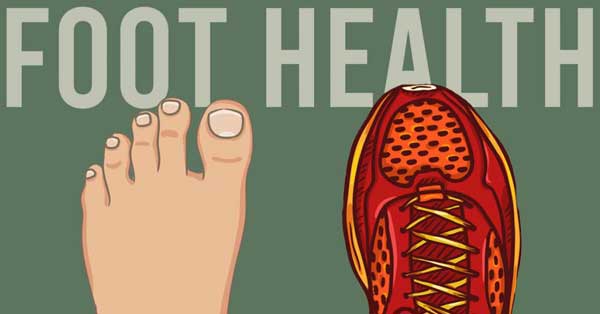Most people don’t realize that we have 26 bones, 33 joints, and 4 layers of the musculature within our feet. That’s a lot going on in a small structure and needs to be taken care of just like any other joint in our body. Additionally, our feet need to be kept strong, just like all of our other muscles.
A common myth about our feet is that they need good arch support at all times. While there are some conditions that do support that statement, the majority of us do not need super supportive shoe wear. In fact, I often teach patients that just because they have been told they have flat feet or are overpronators, doesn’t mean they are doomed for life. Those issues actually can be corrected!
Stronger Feet, Stronger You
There is a significant connection between our hip control and strength, and our foot control and strength. In fact, it can be said that our foot arch is actually created by our gluteal muscles, and then further stabilized by the muscles within our feet. Overpronation and flat feet can also be controlled from our hips, and we often work this into our treatment plan when seeing patients with foot problems, or hip problems.
On another note, just because you may have had orthotics for years, does not mean that you still need them. A good way to look at the use of foot orthotics is that they are essentially acting as a brace. When we think of wearing braces on other joints, the purpose usually is not long term because then the brace is doing the work, and our own muscle isn’t working to stabilize and support us. Essentially this can inhibit our innate foot strength, but also how well our glutes work, and all the muscles on the back of your leg.
So, it can actually be very healthy for our feet to spend time barefoot, as long as it feels good for you at the time. I myself have adopted the use of barefoot shoes or minimalist shoes, but know that it is not something you can just jump into. On a personal level I could only make the transition by 8 total hours the first week, and then slowly progressed from there. I actually didn’t attempt to workout in my minimalist shoes until I had been progressing with this method for 6 full months. I can say that my feet have never been stronger, and have never felt better; but know that progressing into the barefoot method in daily life, running, or working out is a very slow progression in order to safely make the transition. Make sure to discuss this personally with a health care professional before trying.
Why Your Footwear Choice Matters
When it comes to shoes, it is still very personally dependent. One shoe is not best for everyone, however, my favorite brands to recommend are New Balance, Brooks, and Vivobarefoot. I also like to teach people that sandals are not bad, however, shoe wear that is not secure on your foot can be a problem, such a flip flops. Now, I myself still on occasion wear flip flops at the beach or to run a quick errand, but it is important to not make this a regular habit. What happens is that your toes, without you even realizing, continually grip the shoe to try to keep it on, and this is what causes the problem – overuse leading to foot pain, plantar fasciitis, hammer toes, etc. Again, sandals are not bad, you just need to be wise about what sandals your feet are spending time in.
Moral of the story…spend time taking care of your wonderful feet, and hips; and allow yourself to spend time barefoot, as long as it is not painful.
————————————–
Dr. Brianna, PT, DPT is a Doctor of Physical Therapy at Williams Integracare clinic. In addition to her daily treatment of patients at the clinic, she will be hosting a Dance Prehab Class on Saturdays at the clinic beginning in September.


